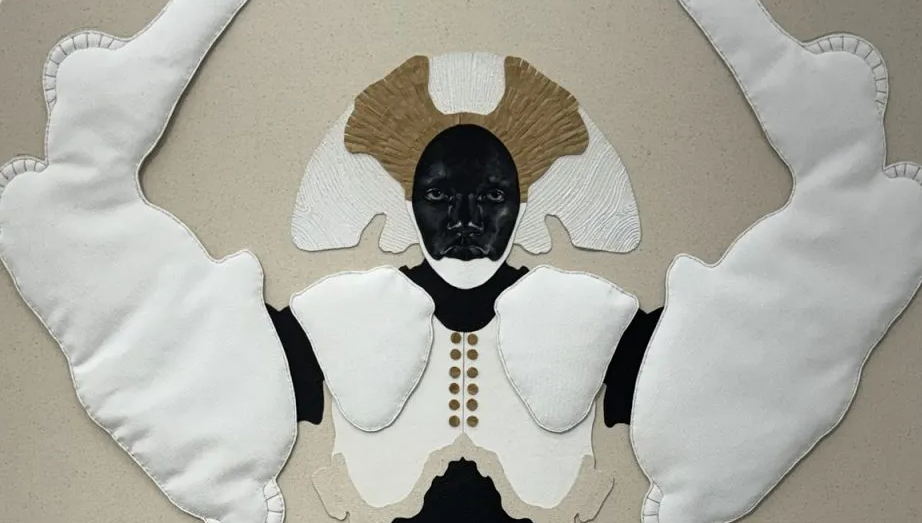In a gem of a show at Efraín López gallery in Tribeca through October 12, Braxton Garneau takes Trinidad’s legendary carnival costumes to the next level in his new series of mixed-media works. Restricted to a color palette of blacks, whites, grays, beiges, and tans, they allow the textures of materials like shell to come alive with both graphic intensity and economy of detail.
“What’s unique about the Trinidadian carnival is the cast of characters,” Garneau explained to Hyperallergic.
The first carnival celebrations took place in Trinidad in 1783, but the party was organized for White colonizers only. In the 1830s, when enslaved individuals won emancipation, Black people proudly began to participate in carnival — but in costumes that mocked the plantation-owning class.
Garneau picks up on this tradition in his acrylic paintings, which incorporate raffia palms and mixed shells in their depiction of costumed figures.

Importantly, these works do not recreate specific costumes. Rather, they are inspired by Trinidad’s long tradition of carnival costumes that exude acerbic sartorial wit as social critique. Although these outfits may now be outnumbered by more lighthearted and feathery costumes that gyrate to the beats of Soca and Calypso in the streets of Port of Spain, Trinidad’s capital, Garneau wanted to explore this lesser-known critical sensibility.
For example, the puffed pants and sleeves of “Matador” (2024) allude to the bygone styles of Trinidad’s colonial class, whose legacy still casts a shadow upon the island. This over-the-top outfit satirizes the 1%, the fashionable equivalent of Dorothy Parker’s putdown “If you want to know what God thinks of money, just look at the people he gave it to.”
Armor is another recurring motif in the work. Although it became obsolete in the late 17th century as firearms become more effective, the Black figures in Garneau’s pastiches claim it for themselves as powerful symbols of status and safety.
As Garneau explained, “Carnival is a time to exorcise your demons.” These witty takedowns of White colonial power invite viewers to join in on an inside joke about who those demons might be, honoring the unique joyful resistance of his Trinidadian ancestors while reinvigorating it with new possibilities.






